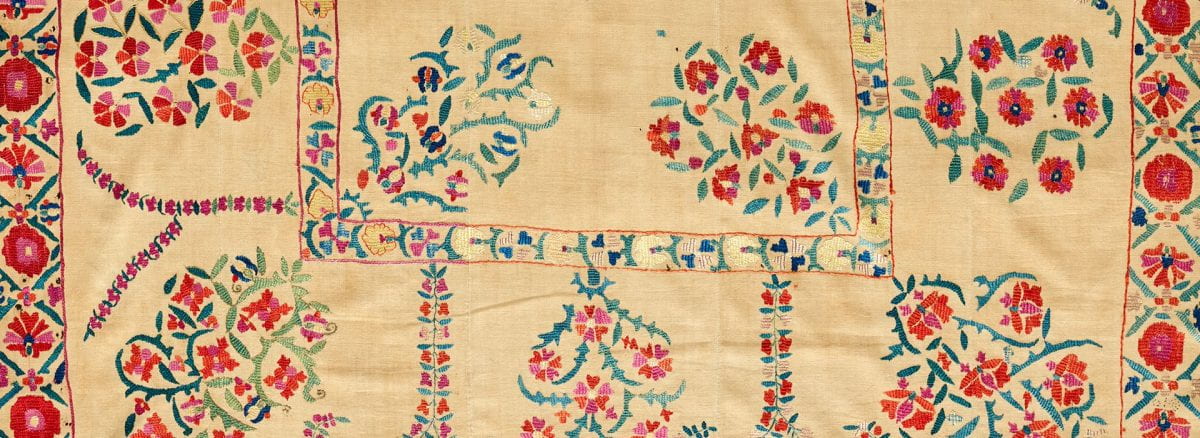“Suzani,” a term derived from the Persian word “suzan,” or needle, refers to the multipurpose, multi-panel, hand-embroidered covers originally made in the urban centers of Central Asia. Their history began hundreds of years ago in what is now Uzbekistan, Tajikistan and Kyrgyzstan. Traditionally, both nomadic and settled women have made the suzani by hand at home for domestic uses ranging from bedding to protective wrappings. Brides prepare them as part of their dowry.
Following age-old practice, a woman cuts a length of cloth into several strips, then loosely stitches them together. She draws a design onto this panel in black ink, then undoes the stitches, allowing several women to simultaneously embroider each strip separately using silk thread. She rejoins the strips when the embroidery is complete.

Intricate and richly colored, suzanis feature floral, fruit, leaf and vine motifs – evoking visions of oases or orchard gardens in the drab and arid Central Asian landscape.
In this large, rectangular example from The Textile Museum Collection, red floral sprays, flowering branches and a lattice of leaves appear vivid against the beige, cotton fabric. An inner border encloses a central floral spray of stylized red flowers framed by serrated leaves, and two rows of three pitchers symbolizing hospitality. Couching stitches using silk thread create the distinct style common in Nurata and Bukhara.

